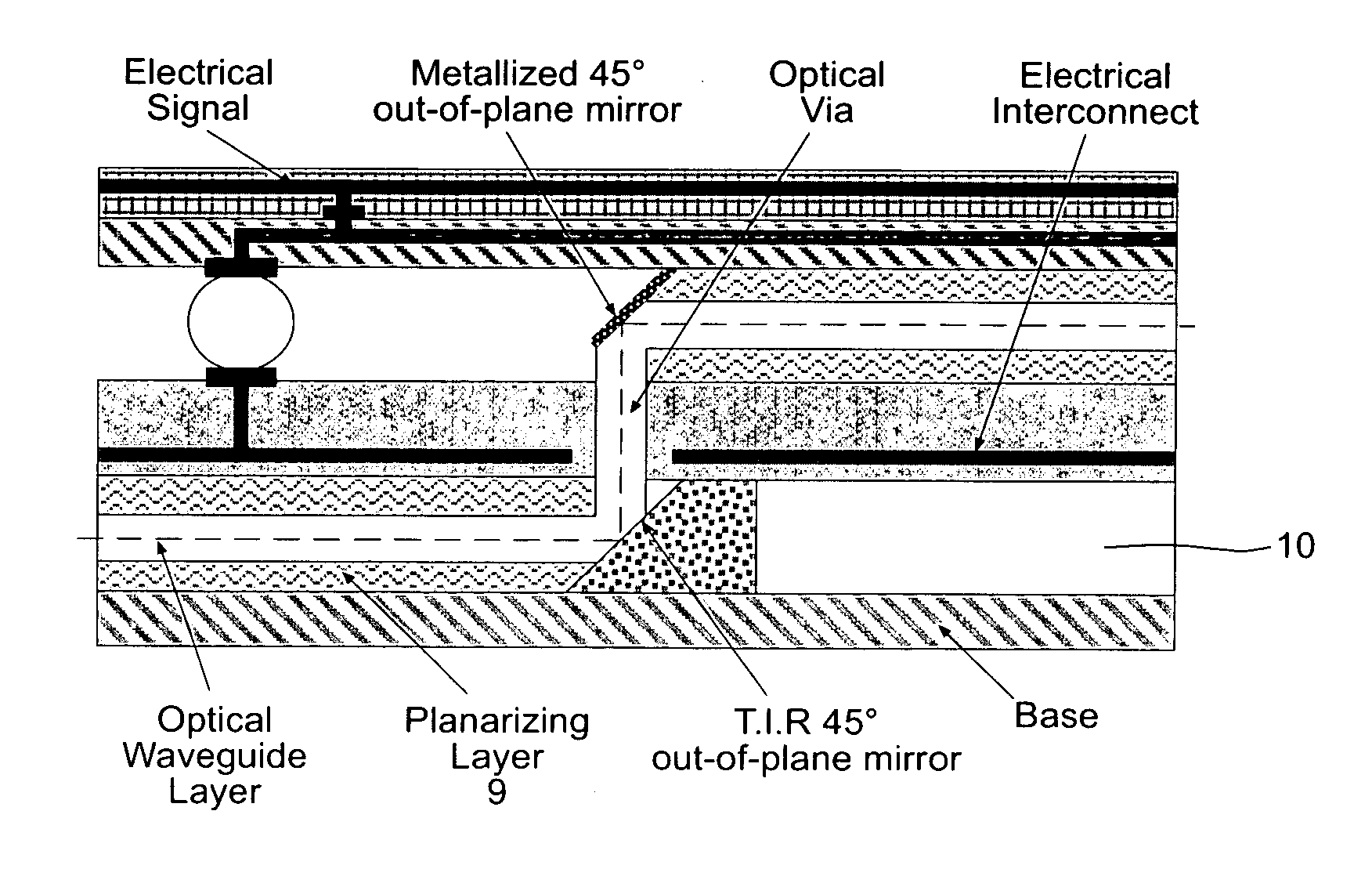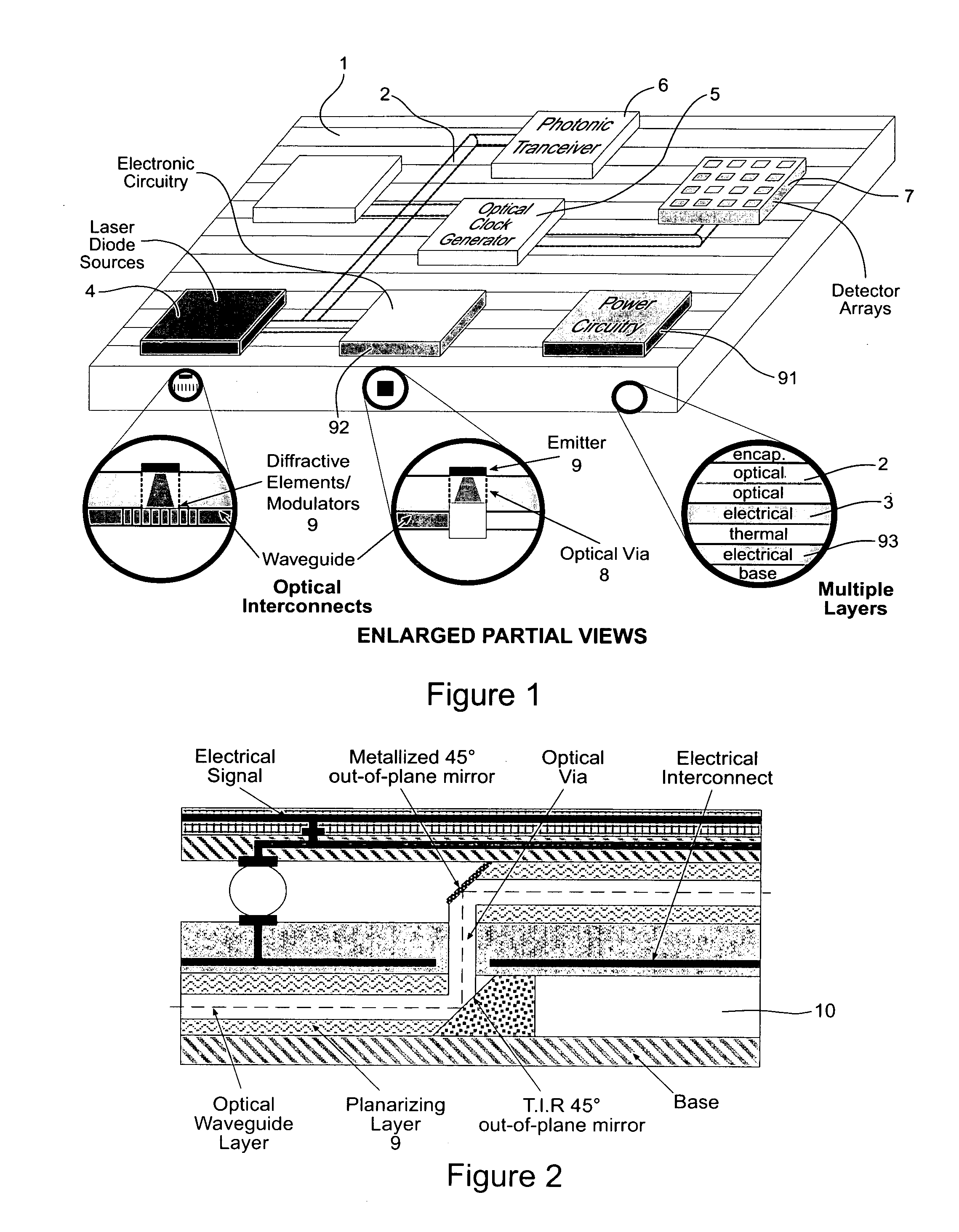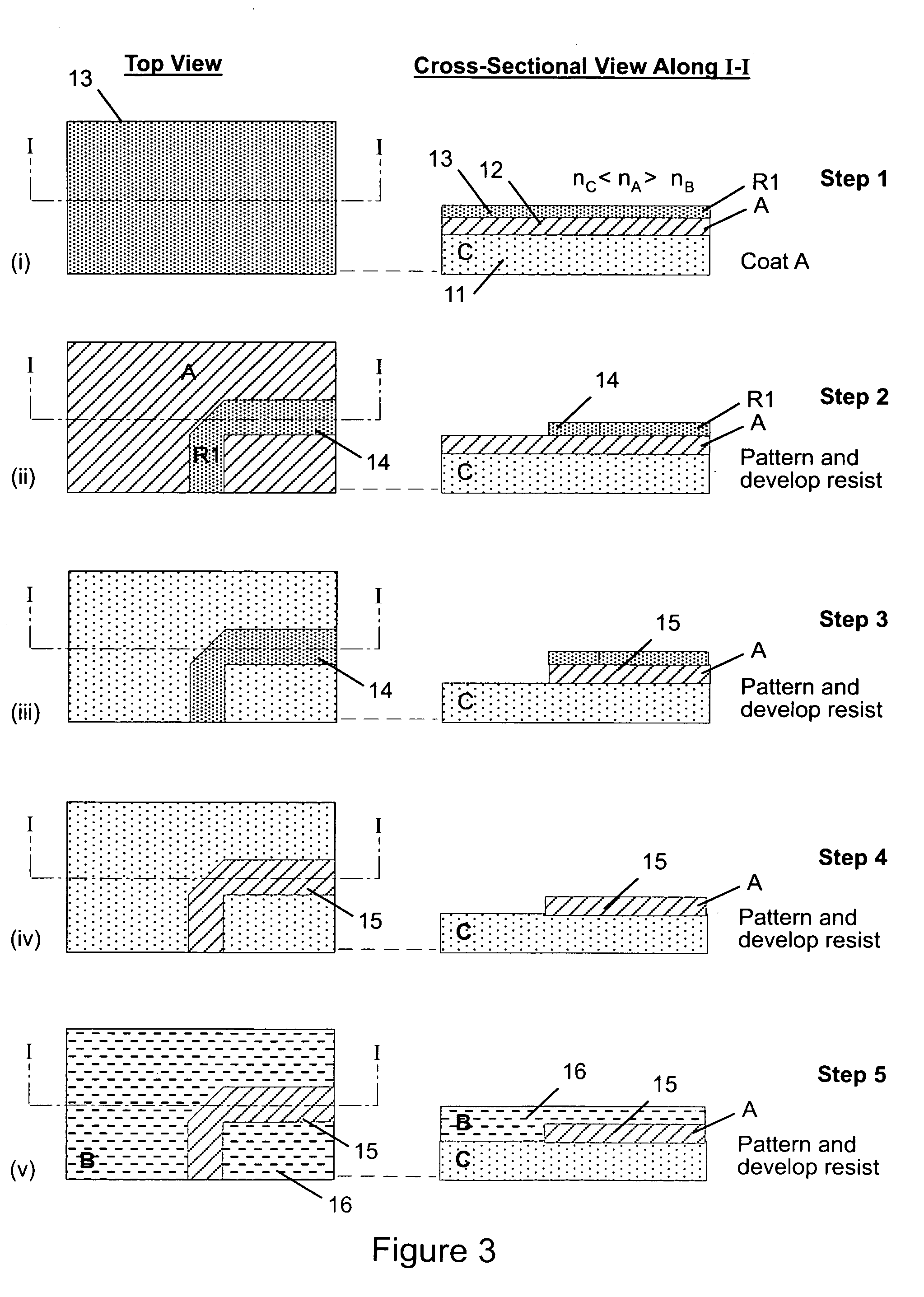Photonic-electronic circuit boards
a photonic-electronic circuit board and solid-state technology, applied in the field of solid-state multiple-layer photonicelectronic circuit board package family, can solve the problems of increasing device complexity, increasing the number of interconnect layers, and the data communication speed between different chips on the board has not kept pace with this progress, so as to achieve efficient transfer
- Summary
- Abstract
- Description
- Claims
- Application Information
AI Technical Summary
Benefits of technology
Problems solved by technology
Method used
Image
Examples
process embodiment 1
Fabrication of Channel Waveguides with TIR In-Plane Mirrors
[0085]This process produces 45° facets in channel waveguides. FIG. 3 shows the sequence of steps for this process. On a suitable substrate or underlayer 11 made of material C (such as polycarbonate, polyimide or an acrylic), first the waveguiding (waveguide) layer 12 made of material A is applied by one of various means, such as spinning, dip-coating or laminating. Material A may be another polymer, such as cycloolefincopolymer, or a glass-polymer composite, such as ormosil. A thick photoresist layer 13 of material R1 is applied on top of the waveguide layer. The resist is patterned using a large-area projection lithography system such as has been described in various publications by scientists at Anvik Corporation. The pattern 14 includes the waveguide channels and a 45° facet for a 90° bend. After exposure, the non-waveguide regions of the photoresist are developed away and an etching step then transfers this pattern into ...
process embodiment 2
Fabrication of Channel Waveguide with Metallized In-Plane Mirrors
[0088]FIG. 4 illustrates a process which produces metallized 45° mirrors in channel waveguides. First a suitable underlayer 11 of material C is applied followed by a layer 12 of the waveguiding material A, as in Process 1. A photoresist layer 23 of material R1 is then applied in which a rectangular well 24 is patterned and developed away. An etching step then transfers this well into the layer 12 to form deeper well 25. As in Process Embodiment 1, suitable etching techniques include reactive ion etching (RIE) and high-density plasma etching. The etch is stopped at the interface with layer 11 using standard etch stop methods as described above. This is followed by metal (e.g., Al) deposition 26 on the walls of the well, after which the resist 23 is stripped. This removes all of the metal that was deposited on top of the photoresist layer as well as the metal that was deposited along the sides of the well that was in con...
process embodiment 3
Fabrication of Channel Waveguides with Metallized In-Plane Mirrors by Photobleaching
[0091]This process produces channel waveguides by inducing a refractive index differential between the waveguide and the non-guiding regions through photobleaching. As shown in FIG. 5, the steps up to the formation of the well with metallized walls are the same as in Process Embodiment 2. Then, a new resist layer 35 of material R3 is next applied and patterned so that all non-waveguiding regions are opened and the desired metallized wall region is protected. The resist material R3 is chosen so that it both an effective barrier to the subsequent etch step and so that it is opaque to the photobleaching radiation. The sample is now subjected to a directional etching process that removes the unwanted metal, leaving the desired metal facet 30. Next, the sample is uniformly irradiated with appropriate exposure of the photobleaching radiation so that the index of the exposed regions 37 made of modified mate...
PUM
 Login to View More
Login to View More Abstract
Description
Claims
Application Information
 Login to View More
Login to View More - R&D
- Intellectual Property
- Life Sciences
- Materials
- Tech Scout
- Unparalleled Data Quality
- Higher Quality Content
- 60% Fewer Hallucinations
Browse by: Latest US Patents, China's latest patents, Technical Efficacy Thesaurus, Application Domain, Technology Topic, Popular Technical Reports.
© 2025 PatSnap. All rights reserved.Legal|Privacy policy|Modern Slavery Act Transparency Statement|Sitemap|About US| Contact US: help@patsnap.com



